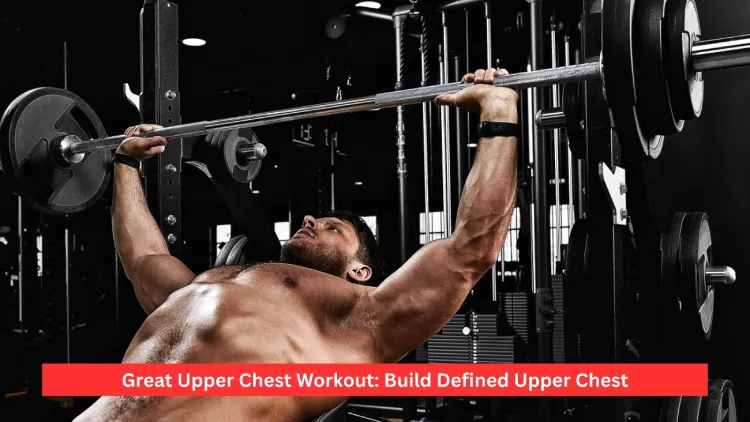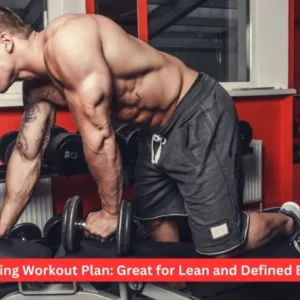To have a complete, sculpted, and proportionate chest, an upper chest workout is necessary. The anterior thoracic, mainly the clavicular head of the pectoralis major, is frequently deficient in action, either through incorrect position of training or through disuse. Working on it successfully using incline presses, flys, and variations of body weights helps in enhancing strength, posture, and beauty. There is no difficult way to build it when using the proper shape, proportion of strength and providing rest. Even though you want to be like a Greek god in terms of body structure or just be more defined in the upper body part, all you need is consistency, nutrition and intelligent training, and you will be there.
Understanding the Upper Chest Muscles
The clavicular head of the pectoralis major makes up the upper chest; it is a smaller, but more important, group of muscles which raise the arms upwards and inwards. It is a joint that links your collarbone to the humerus, and it helps in all the pushing and pressing motions. The upper chest is more difficult to develop due to the fact that most chest exercises are performed at the flat or decline position, which exercises the middle and lower pecs.
In order to work on creating a powerful, well-rounded chest, it is necessary to exercise every part of it, including the upper, middle, and lower. Although there is a specific middle chest area, it is involved in most exercises by nature. The trick is to incorporate an upper chest workout which focuses on angles of incline and controlled motions.
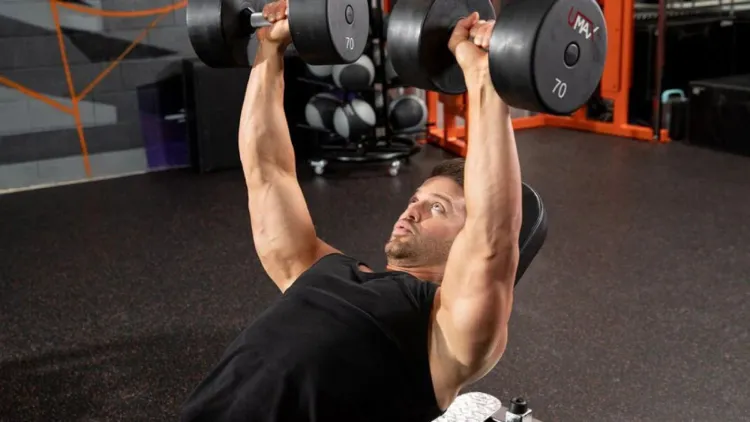
Benefits of an Upper Chest Workout
There is much more than cosmetics in a dedicated upper chest workout. This is the reason why you should put it first:
Symmetry and Balance:
It is the chest up there that makes your torso look that broad and raised. By not doing it, it can appear that you have a bottom-heavy chest.
Functional Strength:
Tasks such as lifting things above the head, throwing or pushing depend on the upper pectoral muscles. Making them stronger improves the performance in the upper body.
Improved Posture:
Exercises such as the upper chest position correct the situation of sloping shoulders by drawing them back and using the stabilising muscles.
Increased Performance in Sports:
The upper chest is very strong and enhances strength in the compound lifts, such as bench press and push-up variations.
Injury Prevention:
The development of the lower and upper chests equally decreases the stress on the shoulders and rotator cuffs.
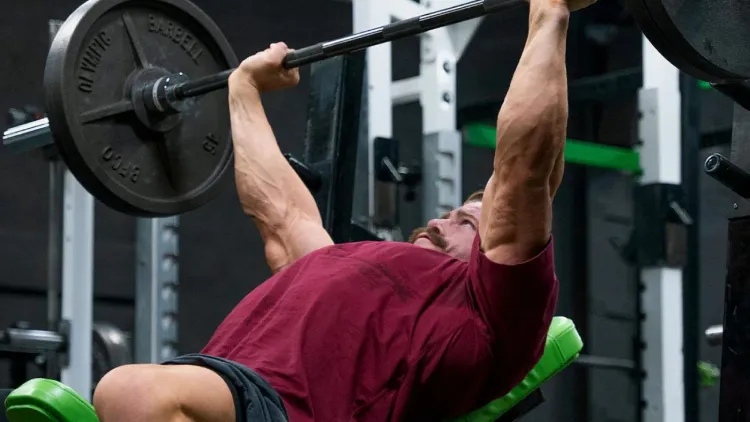
Best Upper Chest Workouts
Let us explore the best upper chest exercises. Both of them address the upper pecs using angles, resistance, and the control of contraction. It is possible to combine and alternate 45 exercises in one session to achieve maximum outcomes.
1. Incline Bench Press
- Worked Muscles: Upper pecs, triceps, front deltoids.
- Equipment required: Barbell or dumbbells, incline bench.
- The incline bench press is the staple of any upper chest exercise. It is one of the best exercises for the chest as it puts tension on the upper fibres.
How to do it:
- Set the bench between 30° and 45°.
- Grasp the barbell a distance of slightly above shoulder-width.
- Bring it down to your higher chest gradually.
- Push it back into the initial position.
- Perform 3–4 sets of 8–12 reps.
Hint: Do not attempt steep inclines (greater than 50 degrees) since he moves the tension to the shoulders and not the chest.
2. Incline Dumbbell Press
This workout targets every side of your chest, which will fix muscle disproportions and enhance balance.
How to do it:
- Seat oneself on a slanting bench with dumbbells on shoulders.
- Pull them up until the arms are straight.
- Slowly lower back down.
- Repeat for 10–12 reps across 3–4 sets.
Fun fact: The incline press is also beneficial in creating the upper chest quickly than flat pressing through the enhancement of a greater number of muscle fibres of the clavicles.
3. Incline Dumbbell Fly
This is an isolation workout that is ideal for building the upper pec stretch and contraction.
How to do it:
- It is done lying on an incline bench with dumbbells that are stretched above the chest.
- Bring them down in a curve till you can experience a pull in your chest.
- Slowly come back to the beginning point.
- Do 3 sets of 12–15 reps.
Pro tip: It is best to maintain a slight bend in your elbows and instead work on squeezing your chest and not your arms.
4. Push-Ups with Feet Elevated
The best workout for the upper chest, and you can do it anywhere without going to the gym.
How to do it:
- Lift your feet to a high location, such as a bench.
- Bend down till your chest almost touches the ground.
- Push back up explosively.
- Perform 3–4 sets of 15–20 reps.
The incline press is a perfect attack on upper pecs, and by lifting your feet, you are imitating the body position. Push-ups and diamond push-ups are also great in doing what the inner chest and triceps – only hold your hands together to form a diamond underneath your chest.
5. Landmine Press
This activity offers a special diagonal pressing position, which is good for isolating the upper pecs.
How to do it:
- Fix a barbell in a landmine or corner.
- Hold the other end close to the chest.
- Push the bar away and up.
- Gradually straighten into the position.
- Complete 3 sets of 10–12 reps.
Landmine press is like a jammer press, which also enhances the chest and shoulders by using explosive upward force.
6. Crossover of Cables (High to Low and Low to High)
To strike against the upper chest, do the low-to-high version.
How to do it:
- Insert handles on a cable machine at the lowest point.
- Pull your arms up high towards your chest.
- Give me a squeeze of the chest.
- Return slowly.
- Perform 3 sets of 12–15 reps.
The cables keep the tension and make your upper chest move through the full range of motion.
7. Hex Press
Being an underrated workout of the upper chest, this exercise involves a pressing up of two dumbbells kept together in order to engage the inner and upper chest.
How to do it:
- Rest on a flat or inclined bench.
- Bring two dumbbells and press them together over the chest.
- Reduce them jointly, maintaining tension between them.
- Press back up.
- Perform 3 sets of 10–12 reps.
The continuous pressure towards the inward pulls in more upper pec fibres, assisting in achieving definition and fullness.
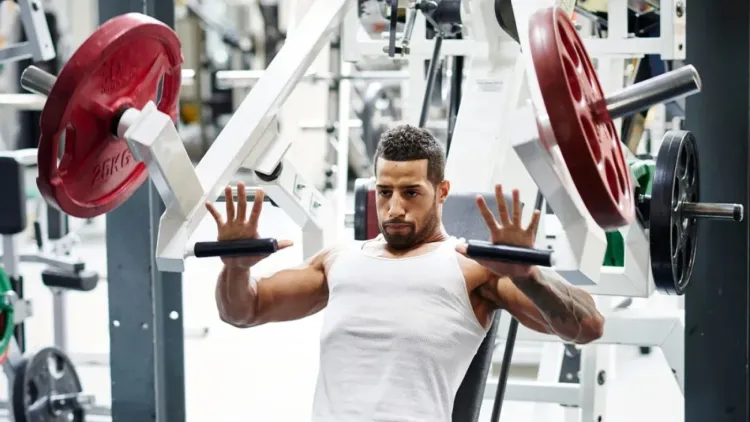
Upper Chest Workout Routine Example
Here’s a sample upper chest routine:
| Exercise | Sets | Reps |
| Incline Barbell Press | 4 | 8–10 |
| Incline Dumbbell Fly | 3 | 12–15 |
| Landmine or Jammer Press | 3 | 10–12 |
| Elevated Push-Ups | 3 | 15–20 |
| Cable Low-to-High Fly | 3 | 12–15 |
Rest: 60–90 seconds between sets.
Frequency: 2 times per week for optimal growth.
Progression: Gradually increase weights every 1–2 weeks.
Tips for Maximum Results
Consistency Over Volume: 5 to 7 chest exercises per session would be too much and cause overtraining. The movements in question are typically few, two or four.
- Rest and Recovery: Be sure to rest at least 4872 hours in between chest workouts. The overtraining symptoms are pain, exhaustion and decline in performance.
- Nutrition Matters: Why protein and calorie intake are important in muscle growth. You will not grow your chest even with regular training without proper nutrition.
- Mind-Muscle Connection: You should squeeze the top of your chest during each of the reps in order to engage the muscle.
- Progressive Overload: Introduce resistance gradually to maintain the muscles.
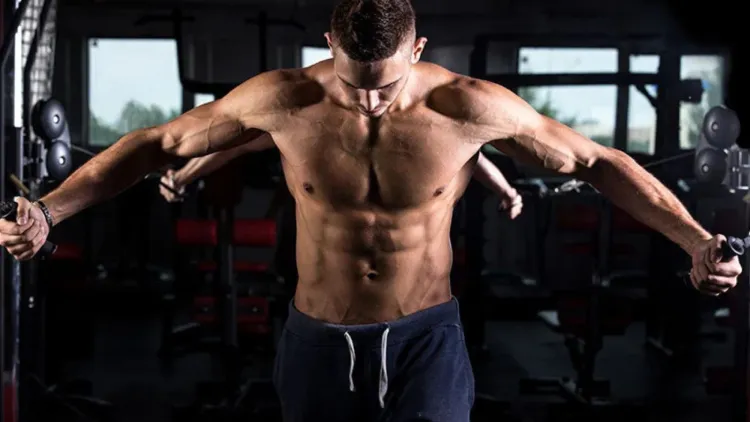
The typical errors in upper chest exercises
- Too Much Flat Bench Work: Flat pressing does not focus on the upper part as much as it focuses on the mid-chest.
- Wrong Bench Angle: This is too high an incline, which involves excessive use of the shoulders, rather than the chest.
- Rapid, spasmodic reps are neglectful; they decrease muscle activity.
- Omitting Warm-Ups: It is always good to do warm-ups at least 5 -10 minutes in advance to avoid strain.
- Recovery not followed: Training chest more than 3 times per week over time is counterproductive.
What is the Timeline for building the upper chest?
Depending on your diet, consistency, and genes, you can see visible results of the upper chest workout in 610 weeks. Gaining muscle requires time. Patients with conditions such as Poland Syndrome might have asymmetrical development of the chest that can be enhanced but not fully remedied with the help of exercise.
Keep in mind that the shape of the chest can be genetic, so not all people can have as flat lower pecs. Nonetheless, even after simply doing some upper chest exercises, a person can gain muscle density and chest elevation, which will be equivalent to the Greek god look many people desire.
Why Target the Upper Chest?
There is more to targeting the upper chest than it involves beauty; having a strong upper body with a balance of the body requires special focus on the upper body. Training only the upper chest will also lead to imbalances, but with the chest being a priority in a balanced program, it will be thoroughly developed. The lower chest is also essential and can be trained by the use of decline presses and decs, whereas push-ups are capable of working the lower pecs and upper as well.

Conclusion
The built-up, chiselled chest begins with a firm upper chest workout. Paying attention to lean movements, good posture, and equal frequency will assist you in becoming strong, developed, and symmetrical. Never train too hard, keep your muscles well-nourished and continue consistently – since only the smart trainers get the results, not necessarily the hard ones.
With the right upper chest workout, commitment and rest, you could come up with that marvellous straight up chest with strong, lying-in takes and confidence.
Frequently Asked Questions
1. What is the time it takes to experience upper chest outcomes?
Top results in an upper chest workout are visible after approximately 610 weeks of constant training, correct diet and rest.
2. Which is the most suitable exercise for the upper chest?
The most effective one is the incline bench press, then by the incline dumbbell press and the low-to-high cable fly exercises.
3. What is the frequency of training the upper chest?
Work out your upper chest a minimum of 2 times/week with no less than 2 days of rest between the sessions to ensure a chance to rejuvenate and enable muscle development.
4. Why does my chest not get bigger?
Poor form, no progressive overload or overtraining usually results in a lack of progress. Pay attention to incline exercises and healthy eating.

